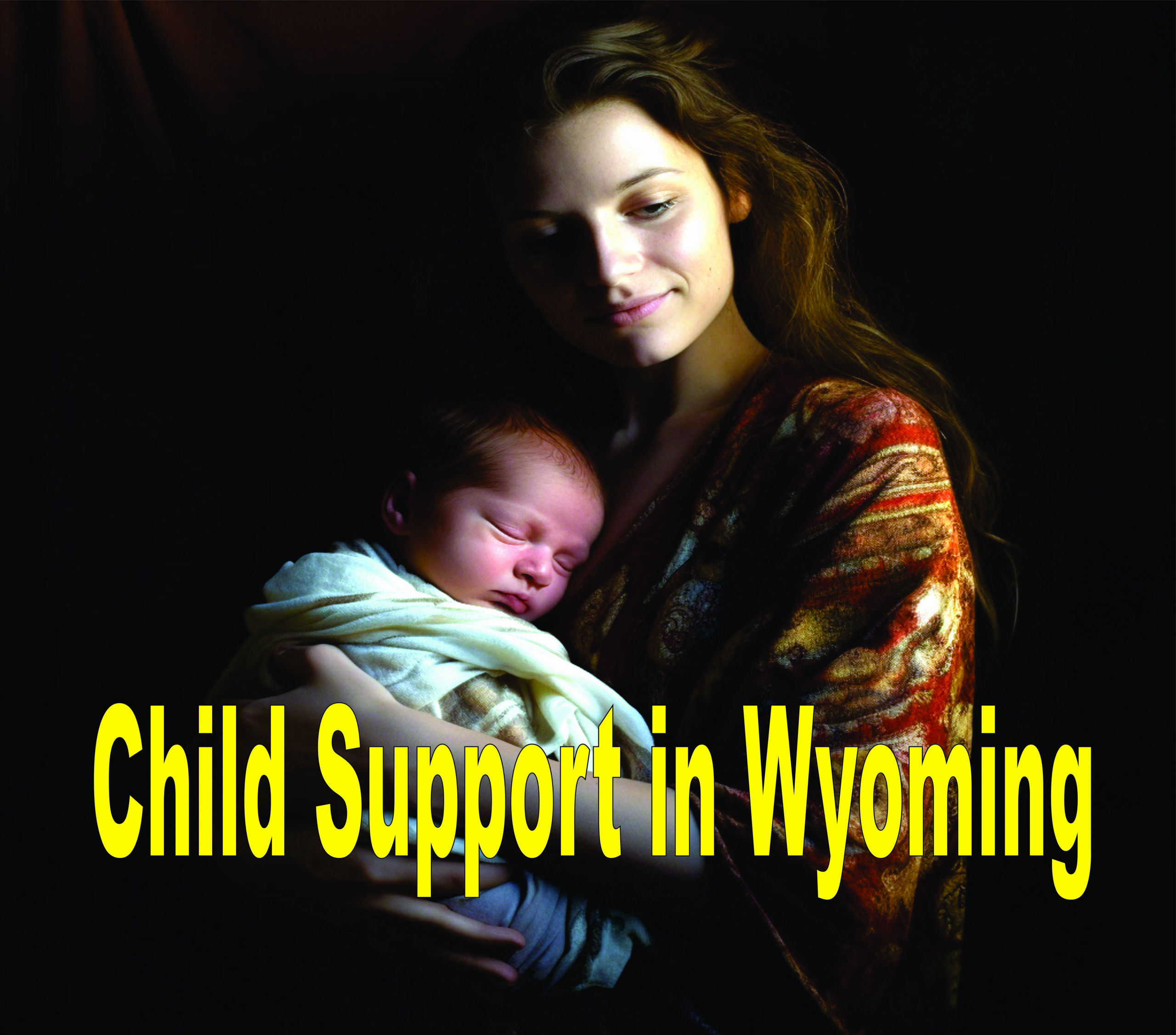Last Updated on October 31, 2023 by Lori Pace
If you are concerned about child support because you are at the edge of divorce, separation, or you are not yet married, you should be aware that Wyoming child support laws require that both parents support the child. Your custody arrangement, and the income of both parents will determine what this amount is in dollars.
When Does Child Support End in Wyoming?
Child support is a payment that helps to cover the costs of raising a child. The child support continues until the child turns 18, and sometimes even longer, if the child is still in highschool or has a physical or mental disability. It doesn’t really matter if the money goes to school lunches or lessons in violin. The court wants to make sure that the money goes towards the child.
Wyoming’s child-support guidelines let parents estimate their support obligation. The number of children you have, your income and your ex’s income determine the support that you will either give or support. This information can be used to estimate your support obligation by using Wyoming’s child support calculator. The guideline amount is an estimation only. The amount must be approved by the court. A support award may sometimes be decreased or increased if it is in the child’s best interests .
How Is Child Support Calculated?
Before you can calculate child support in Wyoming, you must have the net incomes of both parents. After taxes and deductions such as social security, health insurance and taxes should not be included, your net income is what you take home.
You might be wrong to think that you don’t have income because you don’t make a salary. Income includes, among others, unemployment benefits, workers comp payments, military payment, retirement benefits and other benefits. A court can also determine your potential income based upon what you might be earning if you are unemployed or underemployed.
Other than the above financial resources, there are other items that do not fall within the income scope. To arrive at your net income, you can exclude court-ordered support such as alimony. When calculating your net income, you cannot include any resources that are not considered means-tested, such as Pell grants, food stamps, or the POWER program.
Child Support Guidelines
Once you have the income of both parents, you can use it to calculate the child support amount. These guidelines are used to calculate support payments. The following explains how to use the guidelines. However, you’ll need to consult the guidelines yourself to determine how much support payments will be.
First, count your kids. Let’s suppose you have two children with the same parent. Next, calculate your net income. Let’s say that your net income is $1500 per month. Add your net income to that of the other parent. We’ll use 1,000 for this parent’s income. The net income total is $2,500 (1,500 + $1,000). These numbers will tell you how many children and how much income you have.
The guidelines state that you should pay 20% to 36.8% of your net earnings for two children. An additional percentage must be paid for incomes above a certain threshold. Our example net income is $2,500. The baseline amount for child support is $2,083. The 35% child support payment is $2,083. Each dollar over $2,083 is subject to child support. In our example, $417 must be paid or 31.9% of that amount must be used for child support.
As calculated, it looks like this:
$2,083 x 35%=$729
$417 x 31.9%=$133
$729 + $133 = $862.
$862 is the monthly total of child support. This does not mean that you have to pay $862 per month or that you have to pay the other parent $862 per month.
Based on your income, you will need to contribute a pro-rated $862. Remember that the income of one parent is $1,000 per month and yours is $1,500 per month. Your income ($1,500 per month) is 60% of $2,500. You would then be responsible for 60%, or $517. The 40% of $862 that the other parent is responsible for is $345. Your specific custody arrangement will determine whether you accept payments or make them.
This is where one parent stays with the child for over 40 percent of the year, contributes significantly to the cost of raising the child, or where at least one parent has physical custody. These situations will affect the child’s time with each parent, such as 45% with one parent and 55% with the other, or the number of children per parent. Payments will be split to pay more to the parent who has greater responsibility.
If the combined income of the parents is less than $833 then the non-custodial (the parent with less than half the physical custody) must pay 25% of their net income. There is one exception. The minimum monthly payment must be $50. If the parent earns less than $200 per month, $50 would be due. This is even if it is greater than 25% of their net income.
Collecting and Enforcing Child Support
Each month, the parent who is ordered to pay child support must make full payments. You can pay by check, cash or bank transfer.
Parents who try to avoid child support payments can be subject to severe penalties or fines. There are many ways that states can enforce child support orders. Contact Wyoming’s Office of Child Support Services if you need assistance collecting child support from an ex.
Who Pays Taxes on Child Support?
The tax benefit is not available to the parent paying child support. The parent receiving child support payments does not have to consider the money income. The child dependent deduction doesn’t depend on who pays child support, it is based on who spends most of the time with the child.
The child dependent deduction is usually taken by the custodial parent, which is the parent who lives with the child the most. Sometimes, the parents might share the child dependent deduction. In this case, one parent will claim the benefit for even years while the other receives it for odd years. The custody order will outline how and when you are eligible to claim the child dependent deduction (or tax credit) for your child.
Wyoming Child Support Modification
A court will assume that the child support amount provided by the guidelines should be ordered. While parents can agree to pay more child support than the guidelines suggest, they cannot agree to lower it. A court can increase or decrease child support if it is unjustified or inappropriate to pay.
A court will consider the fairness and legality of a guideline-result when a parent is asked to reconsider child support payments before an order is made. This includes factors such as the child’s age, cost for daycare, transportation costs, special needs, or education.
Courts will also look at the parent’s responsibilities to their children and the value of any services provided by one parent. They will also assess the ability of the parents to provide health insurance through benefits. A court will also consider other factors such as the relationship between parents, pregnancy expenses, time spent with each parent, other expenses for the child and whether one parent is unemployed or underemployed.
A court can modify a child support order at any point if the parent experiences a significant change in their circumstances. If the child support amount is changed by 20%, it is considered a substantial change. A substantial change in circumstances could be caused by the loss of a job, relocation of parents, or winning the lottery.



